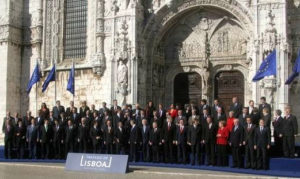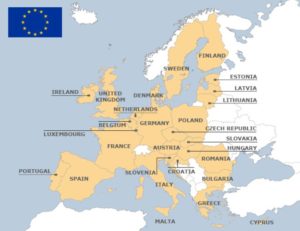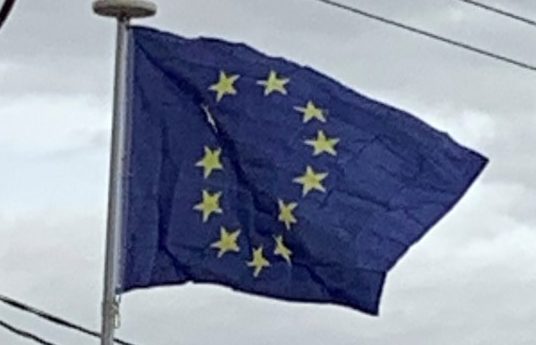In 1990, after the fall of the Eastern Bloc, the former East Germany became part of the Communities as part of a reunified Germany. A close fiscal integration with the introduction of the euro was not matched by institutional oversight making things more troubling. Attempts to solve the problems and to make the EU more efficient and coherent had limited success.
Maastricht Treaty (1992–2007):
The European Union was formally established when the Maastricht Treaty—whose main architects were Helmut Kohl and François Mitterrand—came into force on 1 November 1993. The treaty also gave the name European Community to the EEC, even if it was referred as such before the treaty. With further enlargement planned to include the former communist states of Central and Eastern Europe, as well as Cyprus and Malta, the Copenhagen criteria for candidate members to join the EU were agreed upon in June 1993. The expansion of the EU introduced a new level of complexity and discord. In 1995, Austria, Finland, and Sweden joined the EU.
In 2002, euro banknotes and coins replaced national currencies in 12 of the member states. Since then, the eurozone has increased to encompass 19 countries. The euro currency became the second largest reserve currency in the world. In 2004, the EU saw its biggest enlargement to date when Cyprus, the Czech Republic, Estonia, Hungary, Latvia, Lithuania, Malta, Poland, Slovakia, and Slovenia joined the Union.
Lisbon Treaty (2007–present):
In 2007, Bulgaria and Romania became EU members. The same year, Slovenia adopted the euro, followed in 2008 by Cyprus and Malta, by Slovakia in 2009, by Estonia in 2011, by Latvia in 2014, and by Lithuania in 2015.
On 1 December 2009, the Lisbon Treaty entered into force and reformed many aspects of the EU. In particular, it changed the legal structure of the European Union, merging the EU three pillars system into a single legal entity provisioned with a legal personality, created a permanent President of the European Council, the first of which was Herman Van Rompuy, and strengthened the position of the High Representative of the Union for Foreign Affairs and Security Policy.

In 2012, the EU received the Nobel Peace Prize for having “contributed to the advancement of peace and reconciliation, democracy, and human rights in Europe.” In 2013, Croatia became the 28th EU member.
From the beginning of the 2010s, the cohesion of the European Union has been tested by several issues, including a debt crisis in some of the Eurozone countries, increasing migration from the Middle East, and the United Kingdom’s withdrawal from the EU. A referendum in the UK on its membership of the European Union was held in 2016, with 51.9% of participants voting to leave. The UK formally notified the European Council of its decision to leave on 29 March 2017 initiating the formal withdrawal procedure for leaving the EU, committing the UK to leave the EU on 29 March 2019.
Geography:

